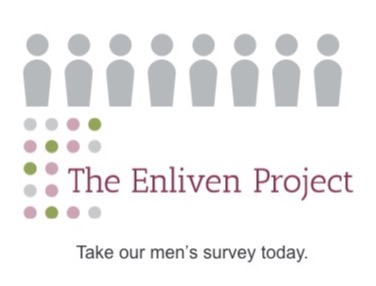While dangerous to compare different types of tragedy, sometimes our response to one kind of trauma can inform our response to another. Last week, a graduate student at my alma mater â Brown University â committed suicide by jumping to his death from the 12th floor of the Sciences Library, a building near a pedestrian thoroughfare on campus.
The Brown Daily Herald, the campus paper, wrote a compassionate article about the incident and the campus response, including heartfelt remarks from the University President, Christina Paxson. The story was shared â though oddly later deleted â from the Brown Alumni Associationâs Facebook Page.
As someone who has faced depression and darkness in my own life, I was sad for this graduate student and his family and friends. And I was sad for the world that would never benefit from the contributions he had left to make. Mental health and suicide can be stigmatized issues; it gave me hope to see Brown sharing compassion, resources, dialogue, and information so openly with its students, faculty, staff, and the public.
At the same time, I began to reflect on the differences in how we respond to campus suicide versus campus sexual violence. The differences are subtle, yet significant.
First, the articles about the studentâs death focused squarely on the tragedy and trauma, the compassionate community response, and the need for healing. Some of the headlines included âGrad students dies after fall from Sci Li. After Hyoun Ju Sohnâs GS death, over 300 community members grieve at evening vigil.â? And âCommunity Rebuilds After Tragedy at SciLi.â? When we report on sexual violence, headlines tend to be more sensationalized and less about the trauma on the individual or community.
Furthermore, the articles focused in detail on the loss of human life, and contributions he may have made to the world. Imagine if we mourned the loss of those same contributions when someone is raped. The truth is that the trauma of sexual violence impacts a victimâs life forever. Yes, she or he may still breathe, talk, and walk but a part of them will never be the same. The healing process is arduous and takes months or years. Even with supports in place, survivors of sexual violence are more likely to struggle with addiction, eating disorders, obesity, and depression â for the rest of their lives. These challenges make them less likely to contribute their full potential to the world.
Finally, campus and student leaders responded with compassion, not defensiveness and blame. This is what I found most striking. A few quotes illustrate this point clearly:
âThe more I learn about him, the sadder I am that he is no longer with us,â? said President Christina Paxson Pâ19, who gave the eventâs opening remarks. âThe death of one student is too many.â?
 âAny time when something really hard happens in a location, we have to come back and make it our own,â? said University Chaplain Janet Cooper Nelson in her remarks.
Paxson struggled to speak to the crowd without crying. âIâm sorry, I canât do this,â? she said at one point during her address. But she did communicate her main hope for the University. âItâs a time when we have to think â how can we care for each other better as a community?â?
Just imagine if we responded like this to campus sexual violence, because it kind of goes without saying that ONE RAPE IS TOO MANY. Imagine if we held vigils at locations where students were raped, and called on each other â men and women, students and staff - to come together in solidarity.
Why is the response subtly yet significantly different? Itâs not that suicide doesnât carry stigma. It does. Itâs not that there arenât misunderstandings about mental illness or depression. There are. Here are a few thoughts:
With suicide, everyone agrees the victim is dead. There isnât a movement that stands in disbelief that suicide happens. Despite overwhelming and consistent evidence that victims rarely falsely report sexual violence, we publicly and privately question sexual assault survivors interpretation of what happened â and question whether the victim is, in fact, a victim.
The university isnât afraid of getting sued or prosecuted. With suicide, there isnât a downside to expressing compassion during a moment of crisis. The general counsel isnât reviewing the Presidentâs remarks or communications about campus suicide. While we certainly want the federal government and courts to hold all institutions accountable to high standards around prevention, reporting, and response to sexual violence, one unfortunate side effect of big sticks (Title IX, threat of litigation, etc) with no carrots is that university administrators have more of an incentive to stay quiet than to speak up.
We believe that we all can play a part in prevention, and are willing to work together to make that happen. With campus sexual violence, the focus is on whatâs wrong and not whatâs right. There are bright spots where prevention is working. There are stories of sexual assaults that were prevented, of bystanders intervening, and of survivors who find healing and justice. But we donât tell those stories as often as we should.
We allow ourselves to feel connected to the victim. When someone commits suicide in a public way, we reflect on our own mortality. Whether we were in the building when it happened, walked by and saw the caution tape, or remember the student from class or the dining hall, we allow ourselves to reflect on that personâs humanity and feel sad that we didnât do more. With campus sexual violence, we often try to distance ourselves from the victim by telling ourselves we would never be that drunk or focusing on how crazy she might be, or that there is no way the perpetrator could have done it.
The next time you see a tragedy or trauma take place, pay attention to how your respond. Do you feel compassion for the victim? Do you reflect on the loss of human potential? Do you allow yourself to be moved? Is it different for different types of trauma?
How can we continue to build more compassionate responses to sexual violence on campuses and in our communities?






